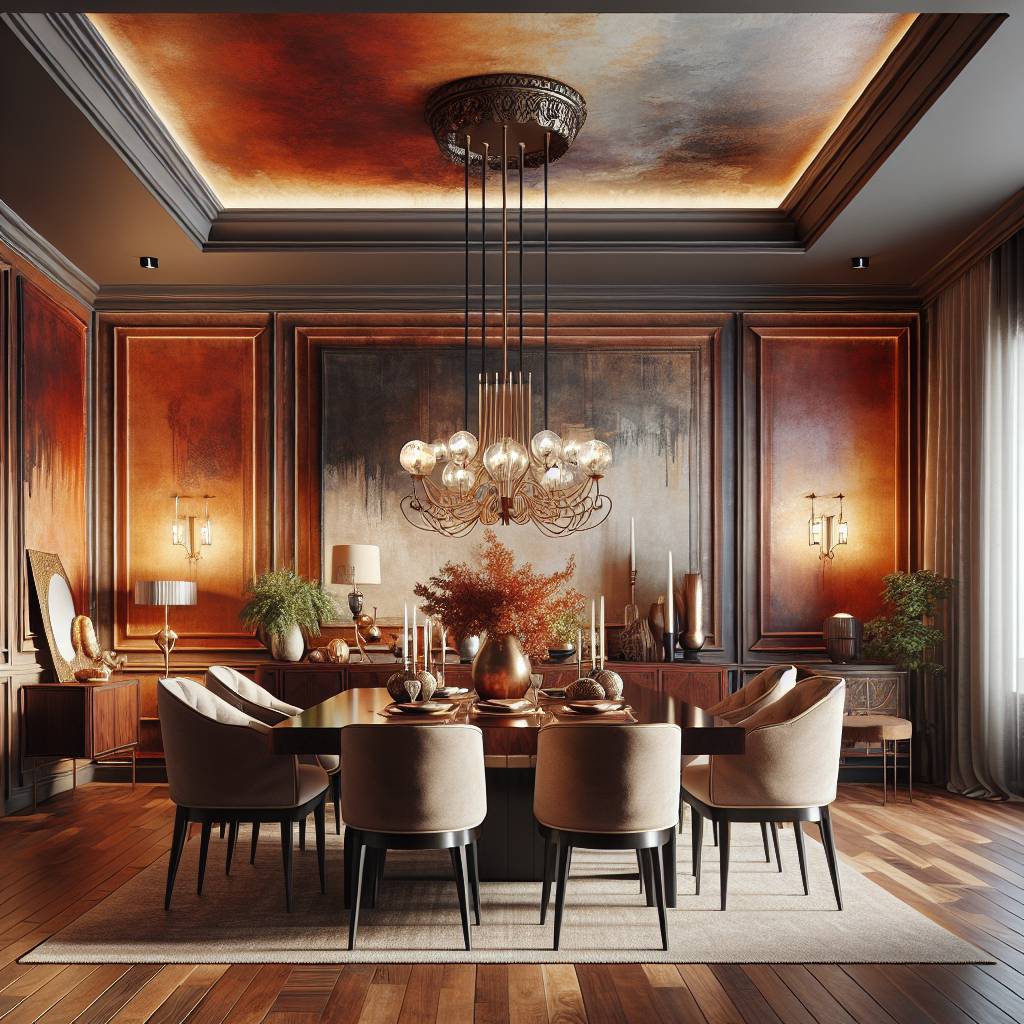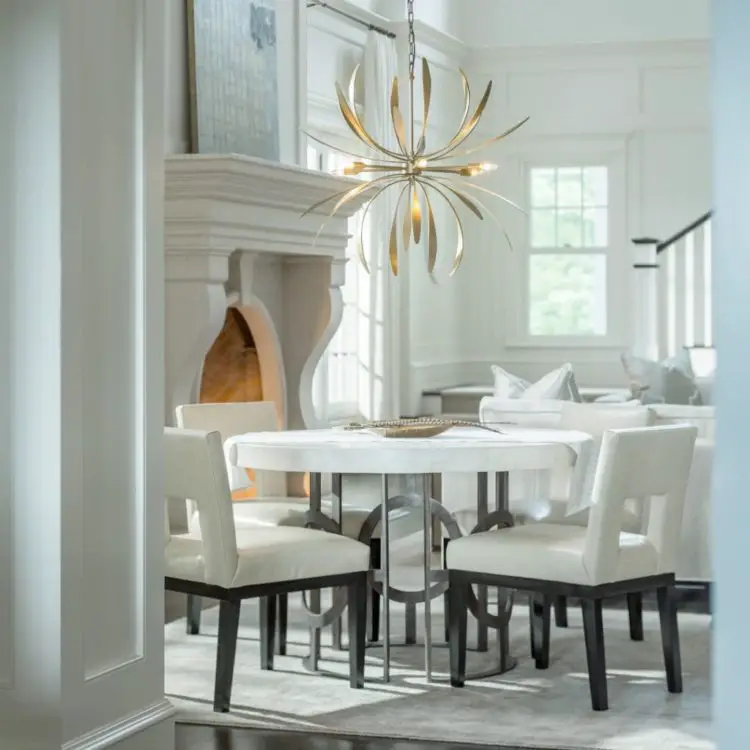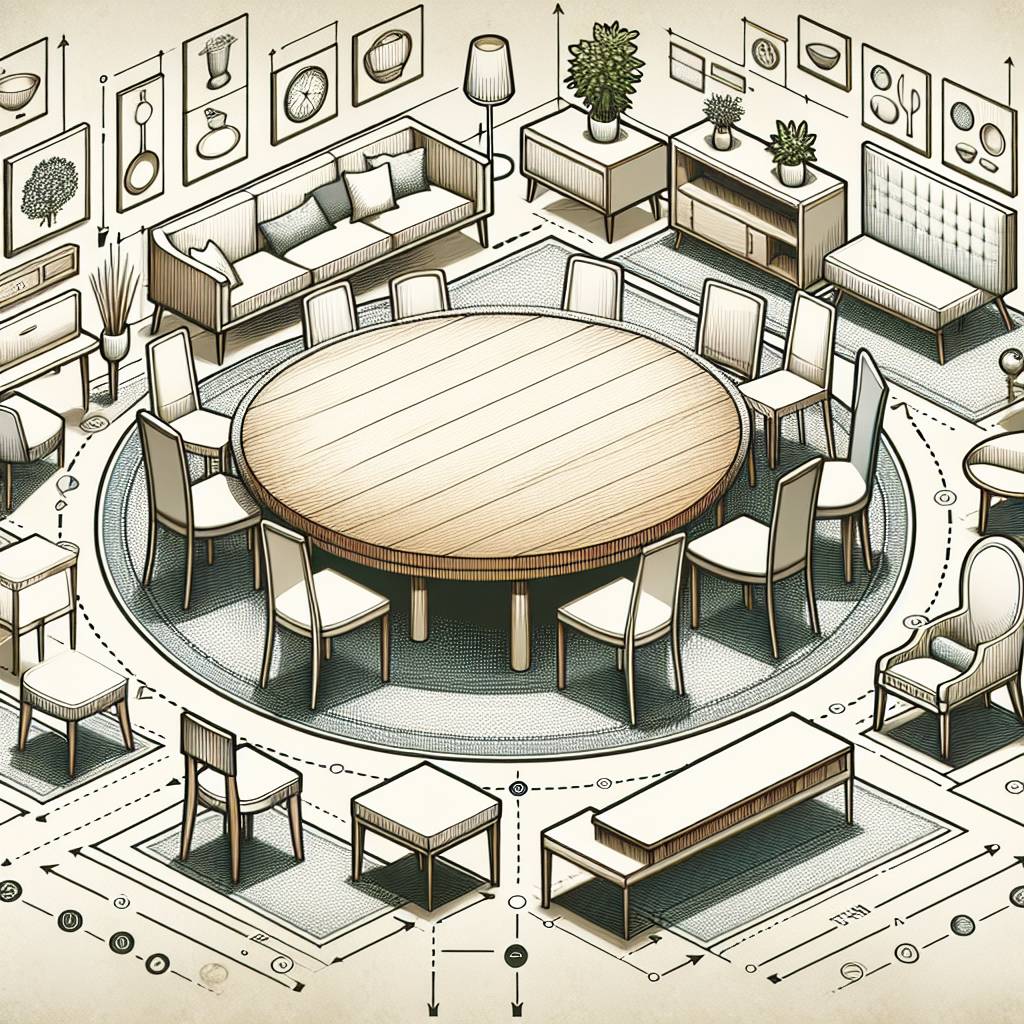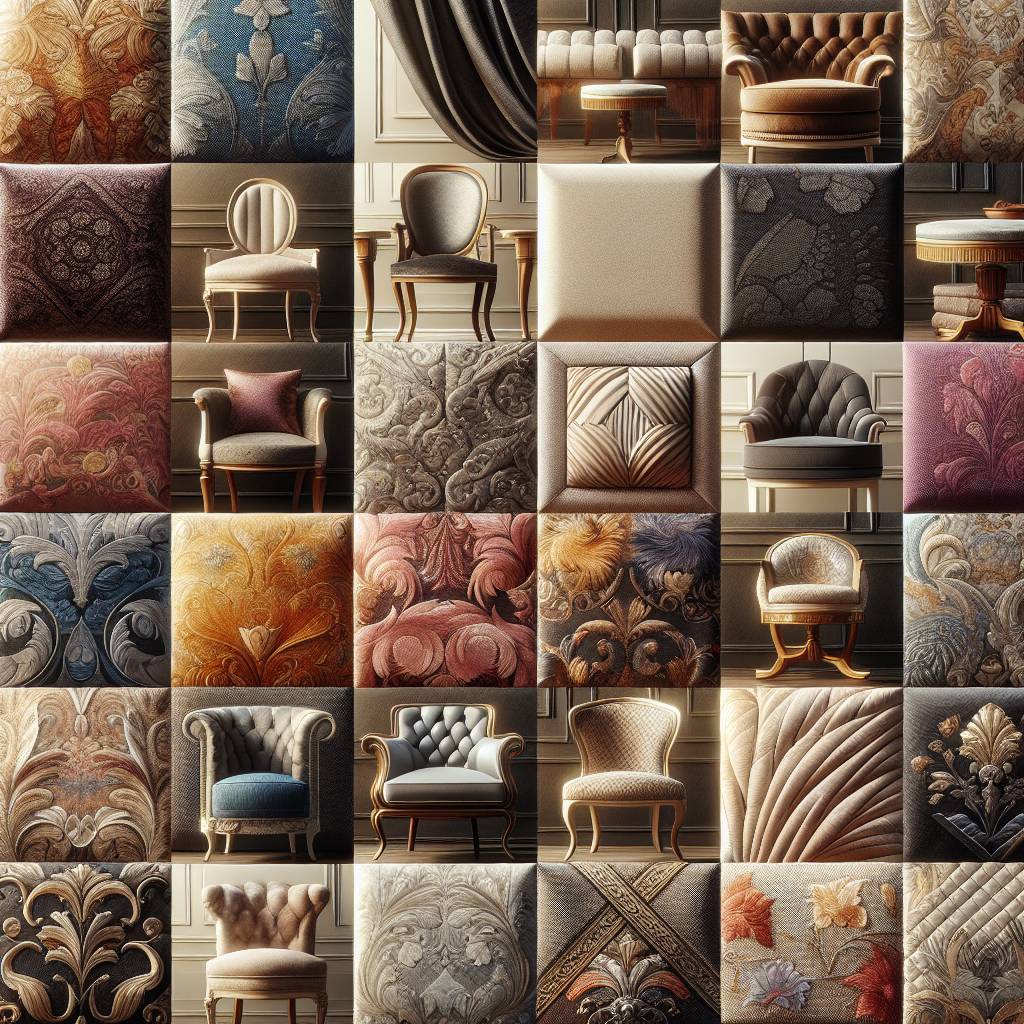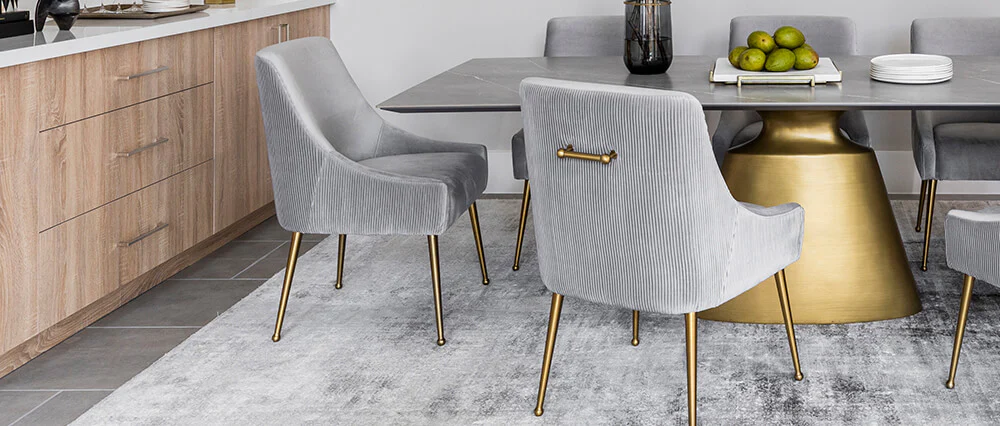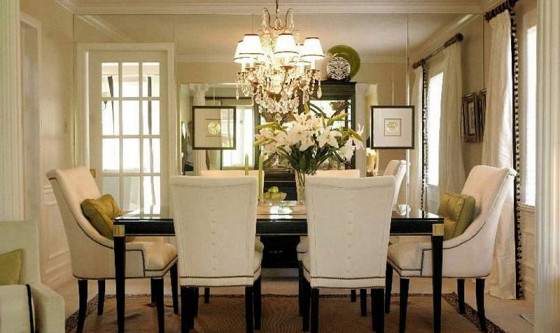Looking to add a touch of flair to your dining room? Wondering how to make a statement with minimal effort? We’ve got you covered! Creating an accent wall in your dining area can completely transform the space, adding personality and style. From bold colors that pop to textured finishes that bring depth, there’s a myriad of options to explore. Whether you prefer a modern, rustic, or eclectic look, accent walls offer endless possibilities for enhancing the ambiance of your dining room. Get ready to elevate your dining experience with these creative wall mural design concepts.
Key Takeaways
- Diverse Options: When choosing an accent wall for your dining room, consider a range of options including classic paint, wallpaper, textural elements, thematic designs, and the interplay of lighting and storage functionality.
- Express Your Style: Use your accent wall to reflect your personal style and create a focal point in the dining area, whether through subtle contrasts or bold statements.
- Enhance Ambiance: Utilize lighting to complement your accent wall, creating a cohesive and inviting atmosphere for dining and entertaining.
- Functional Design: Incorporate storage solutions and functional elements into your accent wall to optimize space and enhance the overall dining room experience.
- Revitalize Your Space: Revamp your dining room by carefully selecting and implementing an accent wall that adds visual interest and breathes new life into the area.
- Experiment with Contrasts: Experiment with different textures, colors, and patterns to achieve a balanced and visually appealing contrast between your accent wall and the rest of the room.
Choosing Your Accent Wall
Color Selection
Color plays a crucial role in setting the tone and ambiance. Opt for warm and inviting colors such as terracotta or mustard yellow to create a cozy atmosphere. These colors can evoke feelings of comfort and warmth, perfect for a space where family and friends gather. Consider bold and vibrant shades like deep red or navy blue to make a striking focal point in the dining room. Ensure that the chosen color complements the existing decor and furniture, creating a cohesive look throughout the space.
Selecting Materials Exploring different materials can significantly impact the overall look of your accent wall. Consider using textured materials like reclaimed wood or faux brick to introduce an earthy, rustic feel into your dining area. These options add depth and character to the space while providing visual interest. For those aiming for an elegant touch, metallic materials such as copper or brass can bring sophistication and glamour to the accent wall. On the other hand, sleek and glossy materials like acrylic or glass offer a modern aesthetic, reflecting light beautifully while adding a contemporary flair.
Wallpaper Options Incorporating wallpaper is an excellent way to introduce patterns, textures, and visual intrigue into your dining room’s design scheme. Experiment with botanical or floral patterns on your accent wall to infuse freshness and natural elements into the space seamlessly. Textured wallpaper is another compelling option that adds depth through its tactile appeal while contributing to an inviting atmosphere within your dining area. For individuals seeking bold statements in their interior design, opting for graphic prints on wallpaper can instantly transform any plain wall into an attention-grabbing feature.
Lighting Considerations Proper lighting enhances the impact of an accent wall by drawing attention towards it effectively. Installing sconces or pendant lights directed towards this particular area helps highlight its unique characteristics during gatherings or meals with loved ones. Consider incorporating adjustable track lighting that allows you to create various moods within your dining room based on different occasions – whether it’s hosting formal dinners or casual get-togethers. Utilizing dimmer switches provides flexibility in controlling light intensity according to specific needs; dimming them down creates intimate settings whereas turning them up brightens up spaces when required.
Classic Paint Ideas
Two-Tone Accents
Two-tone accents can create a visually striking effect. By using painter’s tape, you can easily achieve clean lines when applying the contrasting colors. For example, pairing neutral tones with a vibrant color like teal or mustard yellow can create a bold and eye-catching contrast.
Experimenting with different combinations such as light gray with a pop of coral or sky blue with deep charcoal offers versatility in achieving various moods and styles within the dining room space. The use of contrasting colors adds depth and dimension to the room, making it an ideal choice for those looking to make a statement without overwhelming the space.
Soft Pastels
Soft pastel shades like mint green or lavender are perfect choices for creating a calming atmosphere in your dining room. When paired with white or light gray accents, these soft pastels contribute to a delicate and airy feel that enhances the overall ambiance of the space. Utilizing soft pastels allows you to introduce subtle yet sophisticated elements into your dining area without overpowering its existing decor.
By incorporating soft pastel hues into an accent wall, you can evoke feelings of tranquility and elegance while maintaining visual interest within the room. This approach is particularly beneficial for individuals seeking to infuse their dining spaces with understated charm and timeless appeal.
Bold Navy Blue
Opting for navy blue as an accent wall color introduces depth and richness into your dining room environment. Pairing navy blue with metallic accents such as gold or silver further elevates its luxurious appeal, adding an element of sophistication to the overall design scheme.
The use of navy blue creates a sense of drama that complements various interior styles ranging from traditional to contemporary aesthetics. Whether utilized in conjunction with classic wooden furniture or modern minimalist pieces, this bold hue serves as an impactful focal point that commands attention while exuding timeless elegance.
Wallpaper Accent Walls
Modern Patterns
Modern patterns can transform the space. Experiment with abstract geometric patterns for a contemporary look. Consider asymmetrical patterns for an edgy and modern vibe. Opt for monochromatic modern patterns to maintain a cohesive design scheme.
For example, using wallpaper with sleek, angular designs in black and white can create a striking focal point in the dining room without overwhelming the space.
Geometric Designs
Geometric shapes like triangles or hexagons can be used to create an eye-catching accent wall. Experiment with bold, oversized geometric designs for a statement-making effect. Incorporate geometric designs in neutral tones for a modern yet understated accent wall.
For instance, utilizing large-scale diamond-shaped patterns in soft gray tones can add visual interest while maintaining a sophisticated ambiance in the dining room.
Brick Themes
Creating an industrial-chic vibe is possible by incorporating exposed brick wallpaper or faux brick panels into your dining room decor. Whitewashing the brick accent wall can achieve a rustic and weathered look. Using real reclaimed bricks adds authenticity and texture to the dining room space.
An example of this would be installing realistic-looking faux brick wallpaper that mimics the texture and appearance of aged bricks, adding character to your dining area without the cost or hassle of actual masonry work.
Textural Elements
Board and Batten
If you want to add texture to your dining room, consider the classic board and batten look. Install vertical boards on the accent wall, then paint them in contrasting colors for a striking effect. You can also elevate the design by incorporating decorative molding details into the board and batten pattern. This technique not only adds visual interest but also creates depth and dimension in your dining space.
Another way to introduce visual and tactile appeal is through living wall concepts. By installing vertical planters on the accent wall, you can transform it into a lush living feature that brings nature indoors. Opt for low-maintenance plants like succulents or air plants to ensure easy upkeep while adding an organic touch to your dining area. To keep your living wall thriving year-round, consider integrating an irrigation system that provides consistent moisture levels for your greenery.
Incorporating these textural elements as part of your accent wall ideas for dining rooms allows you to play with different materials, shapes, and colors that contribute unique pieces of artistry within your home decor.
Thematic Accent Walls
Library Style
When considering accent wall ideas for dining rooms, a library-style theme can bring sophistication and warmth. Incorporate built-in bookshelves into the accent wall design to create a cozy reading nook. Use rich, dark hues like mahogany or deep green to evoke a traditional library ambiance. Display books in an organized yet visually appealing manner on the library-style accent wall.
For example, you can arrange classic literature alongside decorative bookends and framed literary quotes to enhance the scholarly atmosphere.
Wine Themes
Another captivating option for accent walls in dining rooms is a wine-themed design. Install wine racks or shelving units on the accent wall to showcase your wine collection, creating an elegant display that also serves as functional storage. Incorporate warm, wine-inspired colors like burgundy or merlot for an inviting atmosphere reminiscent of a vineyard setting.
Consider adding wine-themed artwork or decor elements such as grapevine motifs, vintage corkscrews, or rustic wooden signs with winery names to further enhance the overall theme.
Quiet Forest Scenes
Nature-inspired themes are ideal for creating serene and tranquil dining environments through accent walls. Choose wallpaper featuring serene forest landscapes or woodland motifs to infuse the space with natural beauty and calming vibes. Incorporate natural elements like wood accents or botanical prints to complement the forest theme seamlessly.
For instance, you may integrate real wood paneling along with earthy color palettes such as moss green and sandy brown tones to mimic the peaceful ambiance of a quiet forest retreat within your dining room.
Lighting and Accent Walls
Coordinating Fixtures
Coordinating fixtures play a crucial role in enhancing the overall ambiance. The right lighting fixtures can complement the accent wall, creating a cohesive and visually appealing look. For instance, if your accent wall features warm tones like deep red or burnt orange, consider installing light fixtures with soft amber hues to create a harmonious atmosphere.
Pendant lights or chandeliers can be strategically placed above the dining table to highlight the accent wall while providing functional illumination. These fixtures not only draw attention to the focal point but also contribute to an inviting and intimate dining experience. By incorporating lighting that complements the accent wall, you can elevate the aesthetic appeal of your dining space effortlessly.
Dramatic Highlights
Incorporating dramatic highlights through strategic lighting placement is another effective way to enhance dining room accent walls. Consider using recessed spotlights or track lighting to illuminate specific areas of the accent wall, such as artwork or architectural details. This creates captivating visual effects by casting shadows and emphasizing textures on the accent wall.
Moreover, adjustable spotlighting allows for flexibility in highlighting different elements of the accent wall, enabling you to change focus based on your decor preferences or seasonal updates. By playing with light and shadow, you can add depth and dimension to your dining room’s focal point while infusing an element of drama into the space.
Storage and Functionality
Built-in Solutions
Incorporating built-in solutions can add both style and functionality. Consider integrating built-in shelves or cabinets into your accent wall. These additions not only enhance the visual appeal of the space but also provide practical storage for items such as dinnerware, glassware, or even decorative pieces.
By opting for built-in shelving, you can create a seamless look that complements the overall design of your dining room. These shelves can be used to display art pieces, family photos, or even plants to bring life to the space. Built-in cabinets offer concealed storage for items that you may not want on display all the time.
In terms of functionality, built-in solutions maximize something in your dining room by utilizing the depth of your accent wall effectively. This is particularly beneficial if you have limited floor space and need extra storage without compromising on aesthetics.
Revamping Your Space
Geometric Transformations
Looking to revamp your dining room? Consider creating a striking focal point with geometric accent walls. Geometric patterns can add visual interest and depth to the space, making it feel more dynamic.
You can achieve this look by using bold shapes like triangles, hexagons, or diamonds. These patterns can be painted directly onto the wall or applied using wallpaper or decals. For example, painting a large-scale diamond pattern in a contrasting color can instantly elevate the ambiance of your dining area.
When incorporating geometric transformations into your dining room design, consider using colors that complement your existing decor. For instance, if you have neutral-toned furniture, an accent wall with bold black and white geometric shapes can create a modern and sophisticated vibe.
In addition to paint and wallpaper, you might also explore alternative materials such as wood panels or tiles to create three-dimensional geometric designs on your accent wall. This approach adds texture and dimension to the space while serving as an eye-catching backdrop for your dining area.
Mixing and Matching
Another creative way to spruce up your dining room is by embracing the concept of mixing and matching patterns on an accent wall. By combining different prints or textures in a cohesive manner, you can infuse personality into the space while maintaining harmony within the overall design scheme.
Consider pairing floral wallpaper with subtle stripes or incorporating a combination of solid-colored panels alongside intricate lattice designs for added visual intrigue. The key is to strike a balance between various patterns so that they enhance rather than overwhelm the dining space.
Mixing and matching doesn’t just apply to patterns; it also extends to materials such as reclaimed wood planks combined with metallic accents or even fabric-wrapped panels interspersed with mirrored sections. These unconventional combinations bring character and individuality to your dining room’s aesthetic while allowing you to express your unique style preferences.
When implementing this approach, keep in mind that moderation is crucial. It’s essential not to overcrowd the accent wall with too many conflicting elements but rather aim for an eclectic yet harmonious blend that elevates the overall ambiance of the room.
Subtle and Bold Contrasts
Chevron and Stripes
Consider incorporating chevron or stripes. These patterns offer a dynamic visual effect, adding depth and movement to the space. A chevron pattern can create an illusion of height, making the room feel more spacious, while horizontal stripes can make the room appear wider.
Experimenting with these patterns allows you to play with contrast in your dining room. For instance, if your dining area is relatively small, painting vertical stripes on one wall can give the impression of higher ceilings. On the other hand, a bold chevron accent wall in vibrant tones can inject energy into a neutral-colored dining space.
Consider using painter’s tape to achieve clean lines when painting these patterns. This technique ensures that each stripe or zigzag line appears crisp and professional.
Soft vs. Vibrant Tones
When considering accent walls for dining rooms, it’s essential to weigh the impact of soft versus vibrant tones on your overall design scheme. Soft pastel colors such as pale pink or mint green contribute to an atmosphere of tranquility and elegance in your dining area.
On the contrary, opting for vibrant tones like rich reds or deep blues adds drama and sophistication to the space. These bolder hues create a sense of intimacy while also serving as conversation starters during gatherings.
To maintain balance within your dining room’s color palette, ensure that furniture pieces complement rather than compete with your chosen accent wall color. For example, if you opt for a bold navy blue accent wall behind your table setting, consider pairing it with light-colored chairs or neutral-toned upholstery to prevent overwhelming the space.
Final Remarks
You’ve now got a plethora of accent wall ideas to jazz up your dining room. Whether you opt for classic paint, eye-catching wallpaper, or textural elements, the key is to let your creativity flow. Don’t forget the impact of lighting and how it can elevate your accent wall game. AndSubtle or bold contrasts can make all the difference. Now go forth and transform your dining area into a captivating space that reflects your style and personality!
So, what are you waiting for? It’s time to grab those paintbrushes, browse through wallpaper designs, and explore different textures to create an accent wall that wows. Your dining room is on the brink of a remarkable makeover!
Frequently Asked Questions
What factors should I consider when choosing an accent wall for my dining room?
When choosing an accent wall, consider the natural focal point of the room, such as a fireplace or large window. Take into account the color scheme and overall aesthetic of your dining room to ensure that the accent wall complements the space.
How can I create a thematic accent wall in my dining room?
To create a thematic accent wall, consider using stencils or decals that align with your chosen theme. For example, if you have a rustic-themed dining room, opt for a weathered wood paneling or faux brick wallpaper to evoke a cozy ambiance.
What are some creative ways to incorporate lighting into an accent wall design?
Incorporate lighting into your accent wall by installing sconces or picture lights to highlight artwork or decorative elements. You can also use LED strips behind floating shelves or along architectural details to add depth and visual interest to the space.
Are there any storage solutions specifically designed for accent walls in dining rooms?
Yes, you can integrate functional storage options within your accent wall design by incorporating built-in shelving units, display cabinets, or recessed alcoves. These elements not only enhance the visual appeal but also provide practical storage solutions for dinnerware and decor items.
How do I achieve subtle and bold contrasts in my dining room’s accent wall design?
To achieve subtle contrasts, opt for muted tones that complement the existing color palette while adding depth through texture. For bolder contrasts, juxtapose dark hues with lighter shades or experiment with geometric patterns to create eye-catching visual impact within your dining space.
